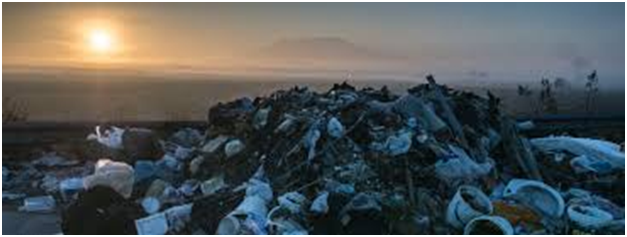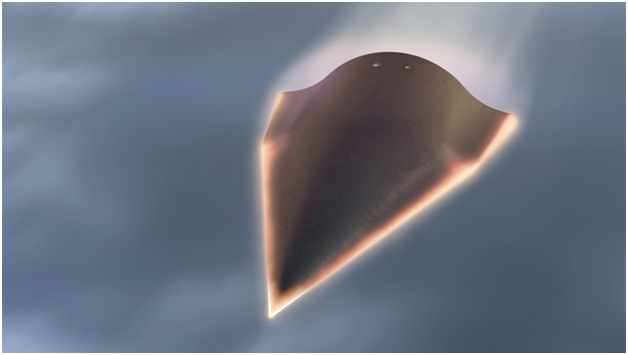
Blog
-
Geiger Readings for February 6, 2013
Ambient office = 92 nanosieverts per hourAmbient outside = 111 nanosieverts per hourSoil exposed to rain water = 110 nanosieverts per hourVine ripened tomato from Top Foods = 120 nanosieverts per hourTap water = 119 nanosieverts per hourFiltered water = 95 nanosieverts per hour -
Radiation News Roundup February 5, 2013
Former Japan Prime Minister says that Alaskan Seals and polar bears are dying after Fukushima radiation exposure. enenews.com
Scientists have found nuclear waste off San Diego coast. enenews.com
US production of uranium concentrate increased 16% in 2013, reaching its highest level since 1997, according to preliminary figures. world-nuclear-news.org
-
Radioactive Waste 52 – Illegal Nuclear Waste Dumping in Italy 1
In 1980, the Camorra Mafia took over the garbage removal in the Italian state of Campania. At the same time, the ‘Ndrangheta Mafia moved into the garbage business in Calabria, another southern Italian state. The Mafia is drawn to garbage collection because ” It’s easy to infiltrate, it’s a desperate necessity for every citizen, and it’s not terribly hard to do.” Organized crime all over the world is in the garbage business.
Campania has been called the “Land of Fires” because there are frequent garbage fires. Desperate landowners are willing to sell off their land cheap to Mafia clans looking for dump sites. It is as if the entire state is seen as a “gigantic carpet” that anything can be swept under. In some places, the land has become so unstable from dumping that houses and other buildings have to be supported by concrete scaffolds. It has been estimated that as much as ten million tons of toxic and nuclear waste have been dumped in Campania. Some of the waste is transported from as far away as Germany.
There is a severe toll on public health from the toxic and nuclear waste. In some area, the rate of cancer is as much as fifty percent higher than the national average. This toll on health has earned Campania another nickname: “The Triangle of Death.” Studies have shown that much of the water in Campania is not safe to drink because of the waste running off the land into streams and rivers. It is difficult to understand how someone could do such damage to the land they live in. The lifespan of a Mafia boss is short and often ends in violence. This leads to an attitude of “live for today” without much concern for the future that the mafia is destroying. They have been referred to as the eco-Mafia. The national government has mobilized the army and is using drones to locate dumpsites.
Mafia dumping has spread beyond Italy to Somalia. There have been reports of deals where guns are traded for the opportunity to dump wastes. Hundreds of barrels of waste have shown up on the shore of Somalia including radioactive uranium waste as well as heavy metals and other toxic substances. A hidden network has sprung up around the world to move toxic and nuclear waste from the developed world to the poor and desperate developing world. A lot of attention in the nuclear nations is paid to the safe disposal of nuclear waste. This global dumping conspiracy threatens to make a joke out of such concern.
Illegal toxic waste dumping in Italy:
-
Geiger Readings for February 5, 2013
Ambient office = 77 nanosieverts per hourAmbient outside = 82 nanosieverts per hourSoil exposed to rain water = 87 nanosieverts per hourCrimini mushroom from Top Foods = 100 nanosieverts per hourTap water = 109 nanosieverts per hourFiltered water = 86 nanosieverts per hour -
Nuclear Weapons 64 – Chinese Falcon Hypersonic Delivery Vehicle
The Chinese military has recently acquired a new delivery system that can be used with either conventional warheads or nuclear warheads. This has generated concern in the U.S. Military because apparently we have nothing that can counter it.
The Air Force National Air and Space Intelligence Center reported at a Congressional hearing that the Chinese have tested a hypersonic glide vehicle called the Falcon that “is basically a ballistic missile-launched system that gets acquires the target, gets the payload fast and high, pitches over, dives to hypersonic speed, and then basically just glides to the target.” The new delivery vehicle could be dangerous even without any warhead because of the kinetic energy it gains during the hypersonic dive.
When combined with medium-range ballistic missiles “hypersonic vehicles of any kind—whether they’re glide vehicles or cruise missiles—are extremely difficult to defend against because just the time is so compressed between initial detection, being able to get a track, being able to get a fire control solution.” The incredible speed of the new delivery system makes it almost impossible destroy with current missile defense interceptors. The new delivery vehicle allows more efficient targeting, allows more targets to be hit with fewer missiles, allows more missiles to be employed per target and allows a bigger reserve of weapons to be maintained against contingency.
The first report of a test of the new delivery vehicle appeared in the Washington Free Beacon on January 9, 2014. The Washington Free Beacon is a conservative website connected to the Center for American Freedom. The Chinese military has said that the new delivery vehicle is intended attacks against aircraft carriers. The Admiral of the U.S. Pacific Command responded to the report by saying that he was not particularly concerned about the new delivery system and that it was just one among many factors that would be considered in a potential conflict between the U.S. and China. If the new Chinese system is as effective as feared, it could force U.S. ships to stay further away from the Chinese coast. The new Chinese system is just one of a number of different weapons systems that the Chinese are working on to counter anti-ballistic missile defense systems.
A member of the Congressional panel that received the Air Force National Air and Space Intelligence Center report said that unless the U.S. military was able to develop directed energy weapons, there would be no way to counter the new Chinese system. Directed energy weapons can utilized a number of different types of electromagnetic energy such as radio frequencies, microwaves, lasers and masers to destroy an incoming warhead by igniting the ionized plasma sheath around the warhead, scrambling the electronics and targeting of a incoming warhead or just vaporizing the warhead. Another type of weapon called a pulsed rail gun could potentially be used against the Chinese system. A rail gun uses magnetic pulses to accelerate a projectile to high velocity.
There has been a lot of discussion recently about the possibility of armed conflict between the U.S. and China. China has been issuing provocative statements about being able to target U.S. cities and it has been deliberately provoking hostile reactions among neighboring countries by claiming the right to control contested areas of ocean and contested islands. While the U.S. has to take rising Chinese military capability seriously, China has much to lose if it attacks the U.S. Chinese investment is so pervasive in the U.S. that they would be destroying their own property in addition to severely damaging a major trading partner. Even if we never retaliated against a major Chinese attack on the U.S. mainland, China would be devastated economically.
Artist’s rendition of the Chinese Falcon Hypersonic Technology Vehicle:
-
Radiation News Roundup February 4, 2013
Cesium-134/137 density spiked up in 13 of 16 elementary school ground soil of Kamakura, Japan in 2013. fukushima-diary.com
TEPCO has released videos of a severely damaged fuel assembly in the Fukushima Unit 4 spent fuel pool. fukuleaks.org
The CEO of Westinghouse announced the company has shifted staff working on its small modular reactor to the team working on the AP1000. nuclearstreet.com
-
Geiger Readings for February 4, 2013
Ambient office = 93 nanosieverts per hourAmbient outside = 45 nanosieverts per hourSoil exposed to rain water = 53 nanosieverts per hourBanana from QFC = 125 nanosieverts per hourTap water = 98 nanosieverts per hourFiltered water = 88 nanosieverts per hour -
Peaceful A-bombs 5 – U.S. Nuclear Fracking Tests
Last year, I posted several blog articles about the “Peaceful A-bombs.” These articles recounted efforts by the U.S., Soviet Union and other countries to find a peaceful use for nuclear bombs. Some of the uses considered had to do with earth moving such as digging canals with a linear series of nuclear bombs. Another possibility was digging out artificial harbors with nuclear bombs. Both the U.S. and the Soviet Union were also interested in seeing if nuclear bombs could be used for fracking to release oil and natural gas from deep below the surface of the Earth. A recent article about this idea of nuclear fracking caught my attention. Since fracking is so much in the news these days, I thought that I would go in to a bit more detail about U.S. nuclear fracking tests.
In December of 1967, the Atomic Energy Commission (forerunner of the Nuclear Regulatory Commission), the U.S. Bureau of Mines and El Paso Natural Gas Company sent researchers to northern New Mexico near Farmington for a test that was referred to as Project Gasbuggy. A four thousand foot shaft had been drilled for the test. A twenty thousand ton nuclear bomb was lowered to the bottom of the shaft and triggered. The explosion created a cylindrical cavity that was over three hundred feet tall and about one hundred and fifty feet in diameter. The intense heat of the blast fused the soil and rock into a glass lining. Subsequent measurements indicated that fractures spread out two hundred feet in all directions and there was definitely an increase in the release of natural gas from the fractured rock.
There were two such more tests by the Atomic Energy Commission. In 1969 near Rulison, Colorado, a forty three thousand ton nuclear device was triggered in an eight thousand five hundred foot shaft. In 1973, a single shaft was used to detonate three thirty three thousand ton nuclear devices near Rifle, Colorado. All of these tests were part of the U.S. Ploughshares Program which sought to find practical civilian uses for nuclear bombs. The Ploughshare Program was cancelled in 1975.
The reasons given for the cancellation of the underground test series included the fact that the process was very expensive. It was estimated that if all of the gas that could be produced by such a well were extracted over a twenty five year period, it would only recover a maximum of forty percent of the cost of the fracking process. There was little public support and, hence, little congressional support for the program. In addition, there was also concern about the tritium contamination of the gas produced by the well. Underground nuclear detonations still release radioactive materials into the atmosphere. There is also the possibility of radioactive contamination of ground water as well. With the development of other technologies such as hydrofracking, the concern about cost and environmental issues, nuclear fracking was never implemented. To this day, the three test sites are still under the control of the Department of Energy Office of Legacy Management.
Project Gasbuggy sign:
-
Radiation News Roundup February 3, 2013
The real victims of the Fukushima Daiichi triple meltdown have become invisible to Japan’s power brokers. vimeo.com
Actor Peter Coyote says that the entire biosphere at risk from radioactive contamination fatal to everything with replicating cells. enenews.com
A reactor at the Salem power plant in New Jersey and a reactor at the Millstone power plant in Connecticut were taken offline Friday because of mechanical problems. nuclearstreet.com
-
Geiger Readings for February 3, 2013
Ambient office = 107 nanosieverts per hourAmbient outside = 81 nanosieverts per hourSoil exposed to rain water = 94 nanosieverts per hourCelery from Top Foods = 84 nanosieverts per hourTap water = 99 nanosieverts per hourFiltered water = 99 nanosieverts per hour






